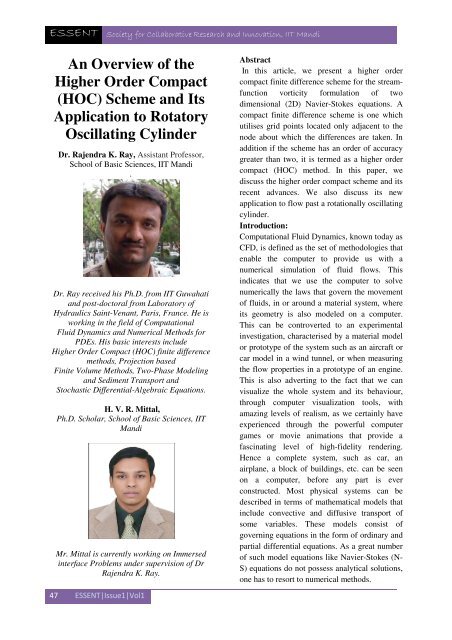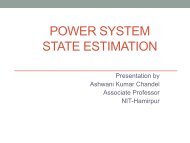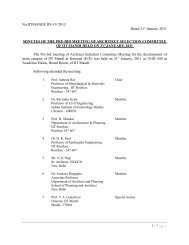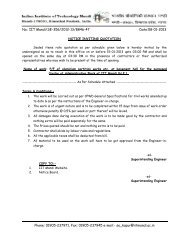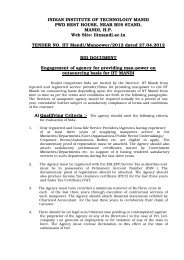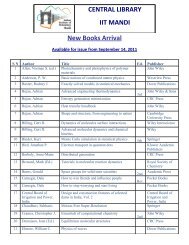Issue1. Vol.1 (April, 2013) - IIT Mandi
Issue1. Vol.1 (April, 2013) - IIT Mandi
Issue1. Vol.1 (April, 2013) - IIT Mandi
- No tags were found...
Create successful ePaper yourself
Turn your PDF publications into a flip-book with our unique Google optimized e-Paper software.
ESSENT Society for Collaborative Research and Innovation, <strong>IIT</strong> <strong>Mandi</strong>An Overview of theHigher Order Compact(HOC) Scheme and ItsApplication to RotatoryOscillating CylinderDr. Rajendra K. Ray, Assistant Professor,School of Basic Sciences, <strong>IIT</strong> <strong>Mandi</strong>.Dr. Ray received his Ph.D. from <strong>IIT</strong> Guwahatiand post-doctoral from Laboratory ofHydraulics Saint-Venant, Paris, France. He isworking in the field of ComputationalFluid Dynamics and Numerical Methods forPDEs. His basic interests includeHigher Order Compact (HOC) finite differencemethods, Projection basedFinite Volume Methods, Two-Phase Modelingand Sediment Transport andStochastic Differential-Algebraic Equations.H. V. R. Mittal,Ph.D. Scholar, School of Basic Sciences, <strong>IIT</strong><strong>Mandi</strong>Mr. Mittal is currently working on Immersedinterface Problems under supervision of DrRajendra K. Ray.AbstractIn this article, we present a higher ordercompact finite difference scheme for the streamfunctionvorticity formulation of twodimensional (2D) Navier-Stokes equations. Acompact finite difference scheme is one whichutilises grid points located only adjacent to thenode about which the differences are taken. Inaddition if the scheme has an order of accuracygreater than two, it is termed as a higher ordercompact (HOC) method. In this paper, wediscuss the higher order compact scheme and itsrecent advances. We also discuss its newapplication to flow past a rotationally oscillatingcylinder.Introduction:Computational Fluid Dynamics, known today asCFD, is defined as the set of methodologies thatenable the computer to provide us with anumerical simulation of fluid flows. Thisindicates that we use the computer to solvenumerically the laws that govern the movementof fluids, in or around a material system, whereits geometry is also modeled on a computer.This can be controverted to an experimentalinvestigation, characterised by a material modelor prototype of the system such as an aircraft orcar model in a wind tunnel, or when measuringthe flow properties in a prototype of an engine.This is also adverting to the fact that we canvisualize the whole system and its behaviour,through computer visualization tools, withamazing levels of realism, as we certainly haveexperienced through the powerful computergames or movie animations that provide afascinating level of high-fidelity rendering.Hence a complete system, such as car, anairplane, a block of buildings, etc. can be seenon a computer, before any part is everconstructed. Most physical systems can bedescribed in terms of mathematical models thatinclude convective and diffusive transport ofsome variables. These models consist ofgoverning equations in the form of ordinary andpartial differential equations. As a great numberof such model equations like Navier-Stokes (N-S) equations do not possess analytical solutions,one has to resort to numerical methods.47 ESSENT|Issue1|Vol1


